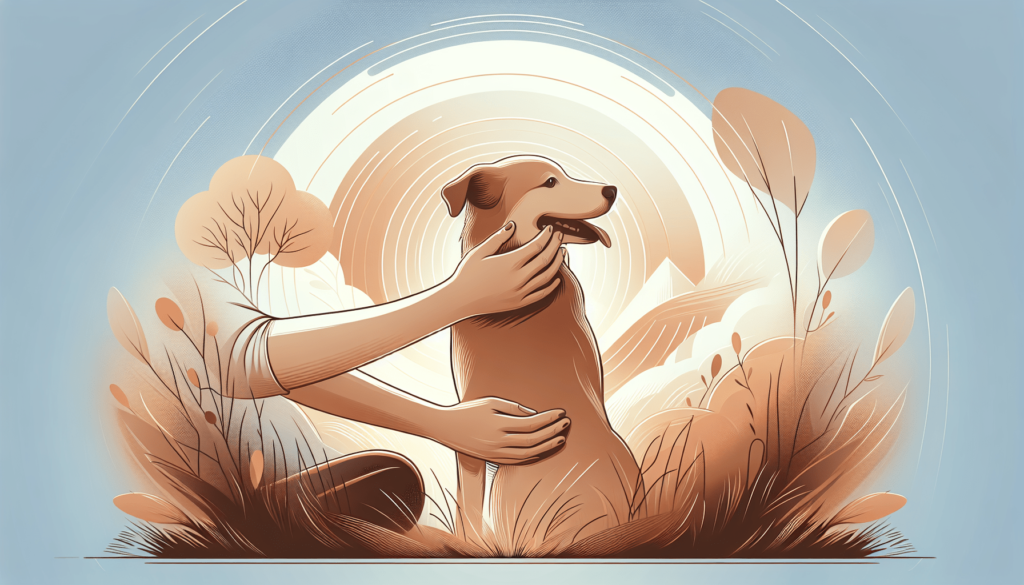If you’re a dog lover but suffer from allergies, you know how challenging it can be to coexist with these furry friends. The constant sneezing, itchy eyes, and runny nose can put a damper on your relationship with dogs. However, there’s no need to worry because we’ve got you covered! In this article, you’ll find a variety of practical tips and techniques to help you effectively manage dog allergies in humans. From creating allergen-free spaces to proper grooming techniques, we’ll provide you with the knowledge and tools you need to continue enjoying the companionship of dogs without the discomfort of allergies. So, let’s get started on finding allergy relief for you and your furry friends!

Understanding Dog Allergies
What are dog allergies?
Dog allergies occur when the immune system overreacts to proteins found in dog dander, saliva, or urine. These proteins, known as allergens, trigger an allergic reaction in sensitive individuals. The allergic response can manifest as various symptoms, ranging from mild to severe. It is important to understand the causes and symptoms of dog allergies in order to effectively manage them.
Common symptoms of dog allergies
Dog allergies can cause a range of symptoms that vary from person to person. The most common symptoms include sneezing, coughing, wheezing, itchy and watery eyes, nasal congestion, runny or itchy nose, and skin rashes. In some cases, individuals may experience difficulty breathing or develop asthma-like symptoms. These symptoms can disrupt daily life and decrease overall quality of life for dog allergy sufferers.
Understanding the causes of dog allergies
Dog allergies are primarily caused by the proteins found in dog dander, which are tiny flecks of dead skin that dogs shed. These allergens can become airborne and easily spread throughout the environment, making it challenging for allergic individuals to avoid exposure. Additionally, dog saliva and urine can also contain allergens, adding to the potential sources of allergic reactions. Understanding these causes can help individuals take proactive steps to minimize their exposure to dog allergens.
Identifying Allergens
Testing for dog allergies
If you suspect you have a dog allergy, it is essential to consult with an allergist for proper evaluation. Allergists can perform skin tests or blood tests to identify specific dog allergens that may be triggering your symptoms. Skin tests involve exposing a small area of your skin to tiny amounts of dog dander extracts and observing for any allergic reactions. Blood tests can measure the level of specific antibodies produced by your immune system in response to dog allergens.
Identifying specific dog allergens
Once you have been diagnosed with a dog allergy, it is important to identify the specific allergens that trigger your symptoms. Different dog breeds may produce different allergens, so it is crucial to determine which particular allergens you are sensitive to. This information can help you make informed decisions when selecting a dog or when implementing allergy management strategies.
Understanding cross-reactivity with other allergens
Many individuals with dog allergies also have other allergies, such as allergies to dust mites or pollen. Understanding cross-reactivity can help you manage your allergies more effectively. Cross-reactivity occurs when the immune system responds to similar proteins found in different allergens. For example, if you are allergic to dog dander, you may also react to certain proteins in other animals such as cats or rabbits. Being aware of these potential cross-reactivities can help you avoid allergens and minimize allergic reactions.
Creating an Allergy-Free Zone
Designating specific areas for the dog
To create an allergy-free zone within your home, it is important to designate specific areas for your dog. This could include confining the dog to certain rooms or areas of the house where allergic individuals spend less time. By keeping the dog away from bedrooms or frequently used living areas, you can reduce the amount of allergens present in those spaces.
Keeping the dog out of certain rooms
If you or someone in your household suffers from dog allergies, it is best to keep the dog out of certain rooms altogether. Bedrooms, for example, should be kept as dog-free zones to provide a sanctuary for a good night’s sleep free from allergens. Consider using baby gates or closing doors to restrict the dog’s access to these areas.
Using air purifiers and filters
Investing in high-quality air purifiers and filters can help remove dog allergens from the air in your home. These devices effectively capture airborne particles, including dog dander, and help improve indoor air quality. Place air purifiers in rooms where allergic individuals spend the most time, such as the bedroom or living room. Regularly clean and maintain these devices to ensure optimal performance.
Maintaining Cleanliness
Regularly grooming the dog
Regular grooming of your dog is crucial in managing dog allergies. Frequent brushing helps remove loose fur and dander from the dog’s coat, reducing the amount of allergens in your home. Consider bathing your dog using hypoallergenic shampoos designed to minimize allergic reactions. Additionally, it is advisable to have someone who is not allergic to dogs perform the grooming tasks to avoid exposure to allergens.
Cleaning the house frequently
To minimize allergens in your home, it is important to maintain cleanliness. Vacuuming carpets and upholstery regularly using a vacuum cleaner equipped with a HEPA filter can help remove dog dander and other allergens. Additionally, dust surfaces and mop floors regularly to eliminate any lingering allergens. Pay particular attention to areas where your dog frequently spends time, such as their bed or favorite lounging spots.
Choosing hypoallergenic bedding
For individuals with dog allergies, choosing hypoallergenic bedding can make a significant difference in managing symptoms. Hypoallergenic bedding is designed to minimize the accumulation of allergens, such as dog dander. Opt for mattress and pillow covers that are specifically designed to be allergen-proof. These covers act as a barrier, preventing the allergens from penetrating the bedding and triggering allergic reactions.

Managing Exposure
Minimizing contact with dogs
Although it may be difficult to completely avoid dogs, minimizing direct contact with them can help reduce allergic reactions. Avoid hugging or kissing dogs, as this can lead to direct exposure to allergens present in their coats or saliva. If you come into contact with a dog, try to wash your hands and face promptly to remove any allergens that may have been transferred.
Avoiding dog parks and petting zoos
For individuals with severe dog allergies, it is advisable to avoid environments where dogs are present in large numbers, such as dog parks or petting zoos. These settings can have high concentrations of dog allergens, making it challenging to manage allergic reactions. When planning outings or activities, consider alternative options that do not involve direct contact with dogs.
Washing hands and clothes after being around dogs
If you do spend time around dogs, it is important to wash your hands and clothes thoroughly afterward. Dog allergens can linger on your skin and clothing, potentially causing allergic reactions even after leaving the presence of a dog. Use soap and water to wash your hands and launder your clothes to remove any allergens that may have adhered to them.
Using Medications and Treatments
Over-the-counter antihistamines
Antihistamines are commonly used to relieve the symptoms of dog allergies. Over-the-counter antihistamine medications, such as cetirizine or loratadine, can help reduce sneezing, itching, and nasal congestion. These medications block the effects of histamine, a chemical released by the body during an allergic reaction. However, it is important to consult with a healthcare professional before starting any new medication.
Prescription medications
In some cases, over-the-counter antihistamines may not provide sufficient relief for severe dog allergies. In such instances, a healthcare professional may prescribe stronger medications, such as nasal corticosteroids or oral corticosteroids. These medications work to reduce inflammation and alleviate symptoms associated with dog allergies. It is essential to follow the prescribed dosage and consult with a healthcare professional for proper guidance.
Immunotherapy (allergy shots)
For individuals with persistent and severe dog allergies, allergen immunotherapy, commonly known as allergy shots, can be an effective long-term treatment option. Allergy shots involve administering gradually increasing doses of the specific dog allergen over a period of time. This helps desensitize the immune system and reduce the allergic response. Allergy shots are typically administered in a healthcare professional’s office and require regular visits over several months or years.
Natural Remedies
Using saline nasal rinses
Saline nasal rinses, also known as nasal irrigation or sinus rinses, can provide temporary relief from congestion and nasal discomfort caused by dog allergies. These rinses involve flushing out the nasal passages with a sterile saline solution. The solution helps moisturize and clear the nasal passages, reducing the presence of allergens and relieving symptoms.
Trying herbal supplements and remedies
Some individuals may find relief from dog allergy symptoms by incorporating herbal supplements or remedies into their daily routine. Natural remedies such as butterbur, quercetin, and nettle leaf extract are believed to possess anti-inflammatory properties that can help reduce nasal congestion and sneezing. However, it is important to consult with a healthcare professional before using any herbal supplements, as they may interact with other medications or have adverse effects.
Utilizing steam therapy
Steam therapy, such as inhaling steam or using a humidifier, can provide temporary relief from nasal congestion and dryness caused by dog allergies. Inhaling steam helps moisturize the nasal passages, promoting easier breathing and reducing discomfort. Be cautious when using a humidifier, as excessive humidity can create an environment conducive to mold growth, which can exacerbate allergies. Ensure proper cleaning and maintenance of the humidifier to prevent the growth of allergens.
Consulting with Allergy Specialists
Visiting an allergist
When managing dog allergies, it is essential to consult with an allergist for accurate diagnosis, treatment, and long-term management strategies. Allergists specialize in identifying and managing allergies, and they can provide valuable guidance in navigating the complexities of dog allergies. They can conduct comprehensive evaluations, recommend appropriate treatments, and offer advice on lifestyle modifications to help alleviate symptoms.
Getting skin tests and allergy shots
During your visit to an allergist, they may perform skin tests to identify specific dog allergens that trigger your symptoms. Skin tests involve applying small amounts of dog dander extracts to the skin and monitoring for any allergic reactions. This information can help determine the most appropriate course of treatment, which may include allergen immunotherapy (allergy shots) to desensitize your immune system and reduce allergic reactions.
Discussing alternative treatment options
Allergy specialists can discuss alternative treatment options for individuals who may not respond well to traditional medications or allergen immunotherapy. They may explore innovative therapies, such as sublingual immunotherapy (under-the-tongue allergy drops) or biologic medications, which target specific immune system components involved in allergic reactions. Consulting with an allergy specialist allows for a comprehensive evaluation of your condition and an individualized treatment plan.
Dealing with Emotional Challenges
Coping with the emotional impact of dog allergies
Living with dog allergies can have emotional implications, especially if you are an animal lover or have a close bond with dogs. It can be challenging to accept that being around dogs may pose risks to your health and well-being. Acknowledging and addressing the emotional impact of dog allergies is crucial in maintaining a positive mindset and finding effective ways to manage your condition.
Finding support from family and friends
Seeking support from family and friends can be immensely helpful in dealing with the emotional challenges of dog allergies. Share your concerns and experiences with loved ones, and ask for their understanding and cooperation in implementing allergy management strategies. Having a support system that is empathetic and accommodating can make a significant difference in your emotional well-being.
Considering alternative pets
If the emotional toll of dog allergies becomes too overwhelming, it may be worth considering alternative pets that are more compatible with your allergies. While no pet is completely hypoallergenic, certain animals produce fewer allergens or have coats that are less likely to trigger allergies. Options such as reptiles, fish, or hypoallergenic dog breeds may be worth exploring. However, it is important to consult with an allergist before making any decisions to ensure the chosen pet will not exacerbate your allergies.
Preventing Allergic Reactions
Being cautious around unfamiliar dogs
When encountering unfamiliar dogs, it is important to be cautious and take appropriate measures to prevent allergic reactions. Avoid touching or petting dogs without consent from the owner. If you suspect a dog may trigger your allergies, maintain a safe distance and avoid direct contact. Even brief interactions can expose you to dog allergens, so it is best to err on the side of caution.
Educating others about your allergy
To minimize the risk of allergic reactions, it is crucial to educate others about your dog allergies. Inform friends, family members, and colleagues about your condition and politely request their cooperation in maintaining an allergy-friendly environment. Encourage them to keep their dogs away from you or away from shared spaces when spending time together.
Preparing for emergencies
In severe cases, dog allergies can cause life-threatening reactions such as anaphylaxis. It is essential to be prepared for emergencies by carrying prescribed medications, such as epinephrine auto-injectors, at all times. Make sure those around you, including family members, friends, and coworkers, are aware of your allergy and know how to administer the medication in case of an emergency. Prompt treatment can be lifesaving in such instances.
By understanding dog allergies, identifying the allergens that trigger your symptoms, implementing strategies to create an allergy-free zone, maintaining cleanliness, managing exposure, utilizing medications or treatments, exploring natural remedies, consulting with allergy specialists, addressing emotional challenges, and taking preventive measures, you can effectively manage dog allergies and lead a healthier, more comfortable life. Remember, with the right approach and support, you can still enjoy the companionship of dogs while minimizing the impact of your allergies.

